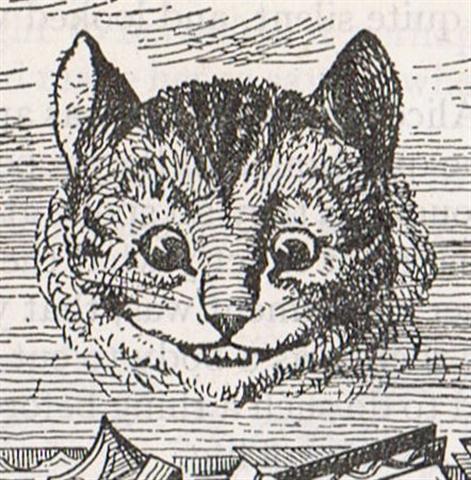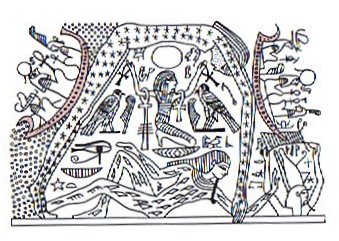Depending on the method of
counting *JANUARY 27 will be regarded as either day 392 = 365 + 27 or
as day
393 = 366 + 27:
|
*JULY 23
(204) |
24 |
25 |
26
(*127) |
27 |
28 |
|
░September 25 |
26 |
27 (270) |
28 |
29 |
30
(*193) |
|
September 29 |
30 |
October
1 |
2 (*195) |
3 |
4 (277) |
|
ι Crucis
(192.2), β Muscae (192.5),
MIMOSA
= β Crucis (192.9) |
no star
listed (193) |
κ Crucis
(194.4), ψ Virginis (194.5), μ Crucis, λ Crucis
(194.6),
ALIOTH
(Fat Tail)
= ε
Ursae Majoris, ι Oct. (194.8) |
MINELAUVA
= δ Virginis (195.1),
COR
CAROLI = α Canum Ven.
(195.3) |
δ Muscae
(196.5),
VINDEMIATRIX (Grape Gatherer)
= ε
Virginis (196.8) |
13h
(197.8)
ξ╣
Centauri (197.1), ξ▓ Centauri (197.9) |
 |
 |
 |
 |
 |
 |
|
*Ca14-12 |
*Ca14-13 |
*Ca14-14
(377) |
*Ca14-15 |
*Ca14-16 |
*Ca14-17 |
| te
kihikihi |
o
te henua - kua haga hia |
kua
pua |
te
vero |
te
henua |
kiore - te henua |
|
ξ Phoenicis (9.0), ρ
Tucanae (9.1),
DENEB KAITOS = β
Ceti,
η
Phoenicis (9.4),
AL NITHĀM (String of Pearls)
= φ╣ Ceti (9.6) |
ACHIRD
(Woman with Luminous Rays) = η Cassiopeiae
(10.7) |
Legs-15 (Wolf)
ν Andromedae
(11.0), φ▓ Ceti (11.1), ρ Phoenicis (11.2),
η ANDROMEDAE (11.4) |
CIH
(Whip) = γ
Cassiopeiae, λ Tucanae (12.4), φ│ Ceti (12.6), μ
Andromedae (12.8) |
φ4 Ceti (13.2) |
no star listed (14) |
|
*JANUARY
22 |
(388 =
392 - 4) |
24 |
25 (210 + 180) |
26 |
27 (392) |
|
░March
26 |
27 |
28 (*7) |
29 (88 =
378 - 290) |
30 |
31 |
|
March 30 |
31 |
April 1
(*11) |
2 (92) |
3 |
4 |
|
*JULY 29
(210) |
30 (*314
- 183) |
31 |
*AUGUST
1 |
2 |
3 (*135) |
|
░October
1 |
2 |
3 |
4 (277) |
5 |
6 (*135
+ *64) |
|
October
5 |
6 |
7 (280) |
8 (*201) |
9 |
10 (*135
+ *68) |
|
APAMI-ATSA (Child of Waters)
=
θ Virginis, ψ Hydrae (198.5),
DIADEM =
α Com. Ber.
(198.9) |
AL
DAFĪRAH (Tuft)
= β Com. Ber. (199.4) |
σ
Virginis (200.4) |
γ Hydrae
(201.0), ι Centauri (201.4) |
Al
Simāk-12 /
Chitra-14 /
Horn-1 (Crocodile) /
Sa-Sha-Shirū-20
(Virgin's Girdle) /
ANA-ROTO-3
(Middle
pillar)
MIZAR (Girdle)
= ζ
Ursae Majoris (202.4),
SPICA =
α VIRGINIS,
ALCOR =
80 URSAE MAJORIS
(202.7)
SADALMELIK
(α Aquarii)
|
71
VIRGINIS
(203.6) |
 |
 |
 |
 |
 |
 |
|
*Ca14-18 |
*Ca14-19 |
*Ca14-20 |
*Ca14-21
(384) |
*Ca14-22 |
*Ca14-23 |
| te
honu paka |
te
henua |
honu kau |
te mata |
te honu |
kua heheu |
|
1h (15.2)
β Phoenicis
(15.1), υ Phoenicis, ι Tucanae (15.6), η Ceti, ζ
Phoenicis (15.7) |
Al Batn Al Hūt-26 /
Revati-28 / 1-iku
MIRACH (Girdle)
= β Andromedae,
KEUN MAN
MUN (Camp's South Gate)
= φ Andromedae (16.0),
ANUNITUM
= τ Piscium (16.5),
REVATI (Abundant)
= ζ Piscium (16.9)
|
ν Phoenicis (17.4), κ
Tucanae (17.6) |
no star listed (18) |
ADHIL
(Garment's Trail)
= ξ Andromedae (19.3), θ
Ceti (19.7) |
KSORA
(Knee) = δ
Cassiopeiae (20.1), ω Andromedae (20.6), γ Phoenicis
(20.8) |
|
*JANUARY 27 |
28 (*314
= *16 - *68) |
29 |
30 |
31 |
(100 -
68 = 32) |
|
░April 1 |
(*12 =
*314 + *64) |
3 |
4 (*14) |
5 |
6 (96) |
|
April 5 |
6 |
7 (280 -
182) |
8 |
(99 +
365 = 464) |
10 (100) |
Likewise can Spica be regarded either as the end
product of the previous generation or as the beginning of
the new generation.

...
The state of the tree
loomed large in their thoughts, because it came about at the
same time the head of One Hunaphu was put in the fork. The
Xibalbans said among themselves: 'No one is to pick the
fruit, nor is anyone to go beneath the tree', they said.
They restricted themselves, all of Xibalba held back.
It isn't clear
which is the head of One Hunaphu; now it's exactly the same
as the fruit of the tree. Calabash came to be its name, and
much was said about it. A maiden heard about it, and here we
shall tell of her arrival ...
... In the
upper part of the fašade [of a temple], as a pendant to the
calabash on the right which represents the sun, it is a
drawing of the moon, either full or as a crescent. This is a
reminder, on the left-hand side, of the celestial regions.
In the remaining space on the wall there are various ritual
objects and animals in no particular order: the priest's
forked staff, which is a symbol of both masculinity and
femininity; the shaft itself, which is breast-high, is male,
the female part is the fork in which the priest rests his
forefinger, itself a symbol of the male ...

On our star maps Spica is below the belt of
the equator, but
in the flag of Brazil it was placed above. Like when the Pharaoh was inside
his Palace
Temple there was uncertainty - was he at his last station in
the old cycle or was he at his first station in the new cycle? Was
he dead or alive? Like Schr÷dinger's Cat.

The absence of reliable information could
have been depicted as an absent Land (henua):
 |
 |
 |
|
Ca1-6 |
*Ca14-21
(384) |
henua |
.jpg)
The Sun-lit earth beneath the arching sky vault was in
ancient Egypt depicted (Gardiner's N18) quite like the henua type
of glyph:



|









.jpg)


